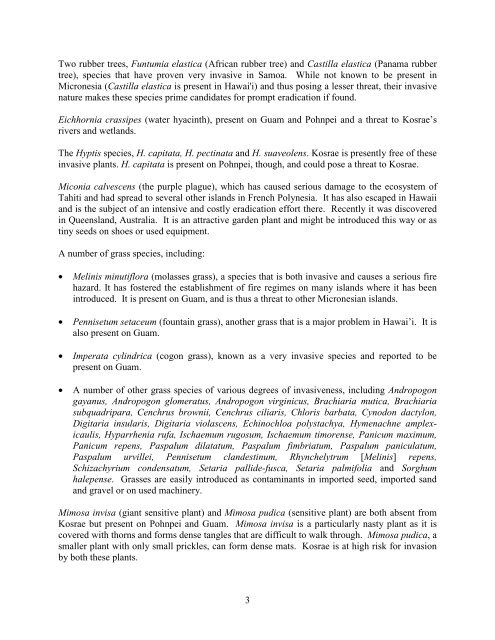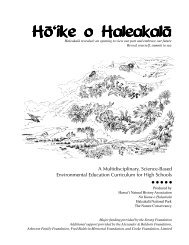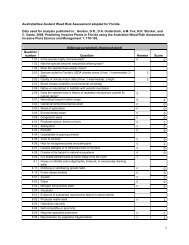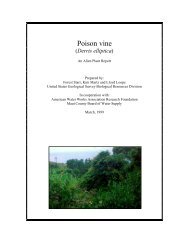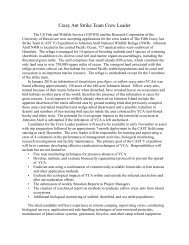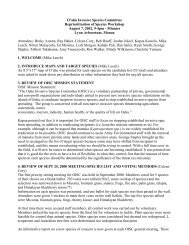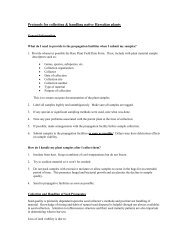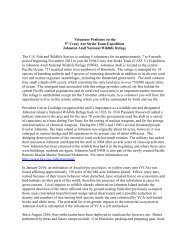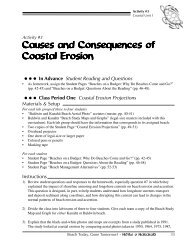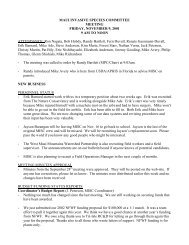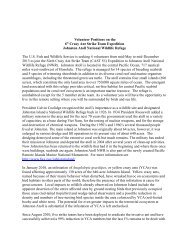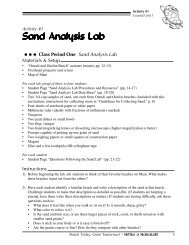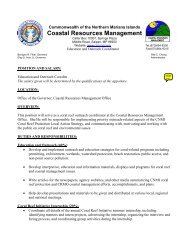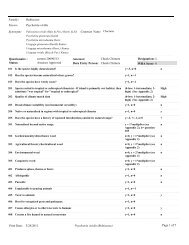Invasive plant species on Kosrae, Federated States of Micronesia
Invasive plant species on Kosrae, Federated States of Micronesia
Invasive plant species on Kosrae, Federated States of Micronesia
You also want an ePaper? Increase the reach of your titles
YUMPU automatically turns print PDFs into web optimized ePapers that Google loves.
Two rubber trees, Funtumia elastica (African rubber tree) and Castilla elastica (Panama rubber<br />
tree), <str<strong>on</strong>g>species</str<strong>on</strong>g> that have proven very invasive in Samoa. While not known to be present in<br />
Micr<strong>on</strong>esia (Castilla elastica is present in Hawai'i) and thus posing a lesser threat, their invasive<br />
nature makes these <str<strong>on</strong>g>species</str<strong>on</strong>g> prime candidates for prompt eradicati<strong>on</strong> if found.<br />
Eichhornia crassipes (water hyacinth), present <strong>on</strong> Guam and Pohnpei and a threat to <strong>Kosrae</strong>’s<br />
rivers and wetlands.<br />
The Hyptis <str<strong>on</strong>g>species</str<strong>on</strong>g>, H. capitata, H. pectinata and H. suaveolens. <strong>Kosrae</strong> is presently free <strong>of</strong> these<br />
invasive <str<strong>on</strong>g>plant</str<strong>on</strong>g>s. H. capitata is present <strong>on</strong> Pohnpei, though, and could pose a threat to <strong>Kosrae</strong>.<br />
Mic<strong>on</strong>ia calvescens (the purple plague), which has caused serious damage to the ecosystem <strong>of</strong><br />
Tahiti and had spread to several other islands in French Polynesia. It has also escaped in Hawaii<br />
and is the subject <strong>of</strong> an intensive and costly eradicati<strong>on</strong> effort there. Recently it was discovered<br />
in Queensland, Australia. It is an attractive garden <str<strong>on</strong>g>plant</str<strong>on</strong>g> and might be introduced this way or as<br />
tiny seeds <strong>on</strong> shoes or used equipment.<br />
A number <strong>of</strong> grass <str<strong>on</strong>g>species</str<strong>on</strong>g>, including:<br />
• Melinis minutiflora (molasses grass), a <str<strong>on</strong>g>species</str<strong>on</strong>g> that is both invasive and causes a serious fire<br />
hazard. It has fostered the establishment <strong>of</strong> fire regimes <strong>on</strong> many islands where it has been<br />
introduced. It is present <strong>on</strong> Guam, and is thus a threat to other Micr<strong>on</strong>esian islands.<br />
• Pennisetum setaceum (fountain grass), another grass that is a major problem in Hawai’i. It is<br />
also present <strong>on</strong> Guam.<br />
• Imperata cylindrica (cog<strong>on</strong> grass), known as a very invasive <str<strong>on</strong>g>species</str<strong>on</strong>g> and reported to be<br />
present <strong>on</strong> Guam.<br />
• A number <strong>of</strong> other grass <str<strong>on</strong>g>species</str<strong>on</strong>g> <strong>of</strong> various degrees <strong>of</strong> invasiveness, including Andropog<strong>on</strong><br />
gayanus, Andropog<strong>on</strong> glomeratus, Andropog<strong>on</strong> virginicus, Brachiaria mutica, Brachiaria<br />
subquadripara, Cenchrus brownii, Cenchrus ciliaris, Chloris barbata, Cynod<strong>on</strong> dactyl<strong>on</strong>,<br />
Digitaria insularis, Digitaria violascens, Echinochloa polystachya, Hymenachne amplexicaulis,<br />
Hyparrhenia rufa, Ischaemum rugosum, Ischaemum timorense, Panicum maximum,<br />
Panicum repens, Paspalum dilatatum, Paspalum fimbriatum, Paspalum paniculatum,<br />
Paspalum urvillei, Pennisetum clandestinum, Rhynchelytrum [Melinis] repens,<br />
Schizachyrium c<strong>on</strong>densatum, Setaria pallide-fusca, Setaria palmifolia and Sorghum<br />
halepense. Grasses are easily introduced as c<strong>on</strong>taminants in imported seed, imported sand<br />
and gravel or <strong>on</strong> used machinery.<br />
Mimosa invisa (giant sensitive <str<strong>on</strong>g>plant</str<strong>on</strong>g>) and Mimosa pudica (sensitive <str<strong>on</strong>g>plant</str<strong>on</strong>g>) are both absent from<br />
<strong>Kosrae</strong> but present <strong>on</strong> Pohnpei and Guam. Mimosa invisa is a particularly nasty <str<strong>on</strong>g>plant</str<strong>on</strong>g> as it is<br />
covered with thorns and forms dense tangles that are difficult to walk through. Mimosa pudica, a<br />
smaller <str<strong>on</strong>g>plant</str<strong>on</strong>g> with <strong>on</strong>ly small prickles, can form dense mats. <strong>Kosrae</strong> is at high risk for invasi<strong>on</strong><br />
by both these <str<strong>on</strong>g>plant</str<strong>on</strong>g>s.<br />
3


